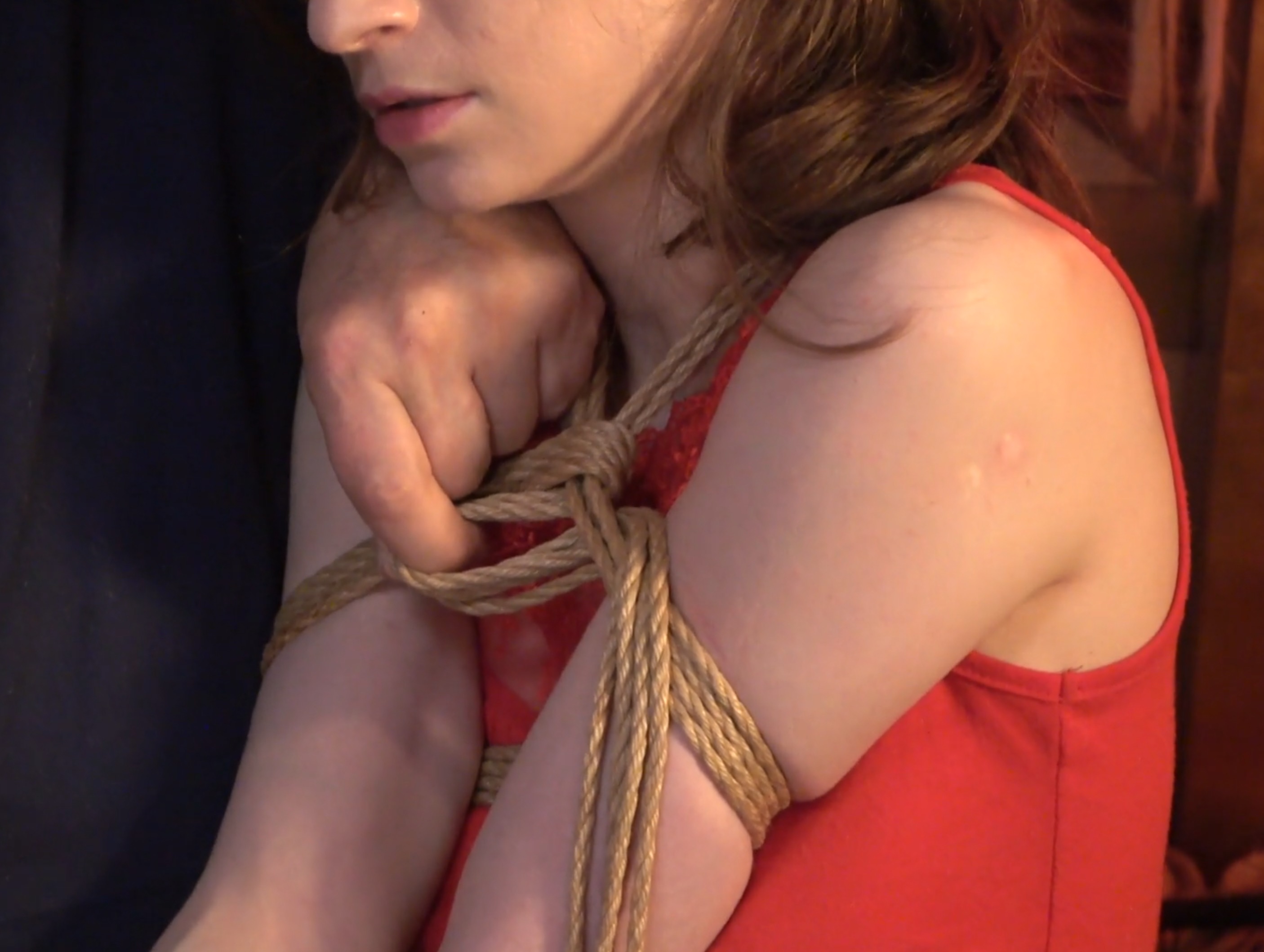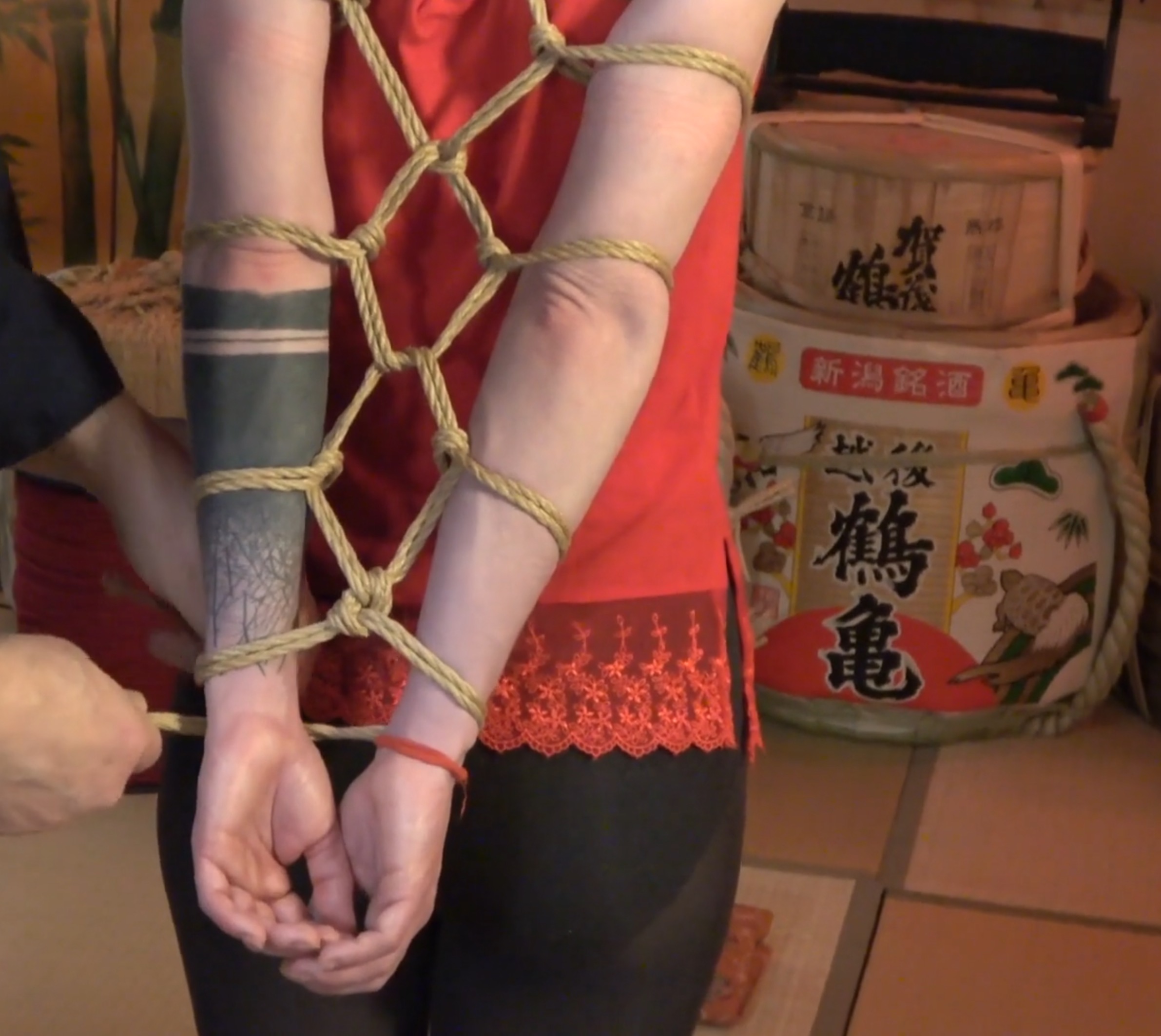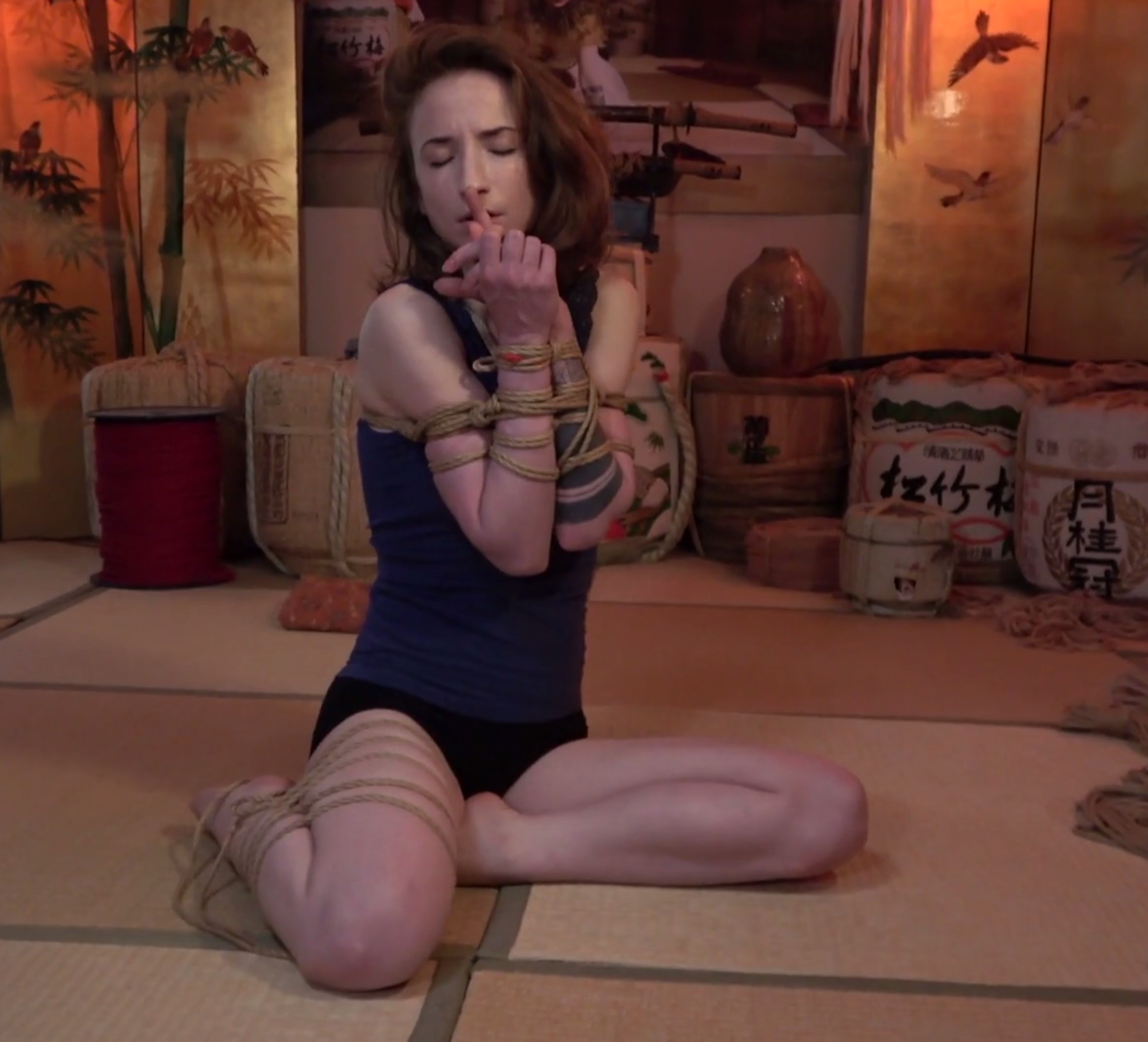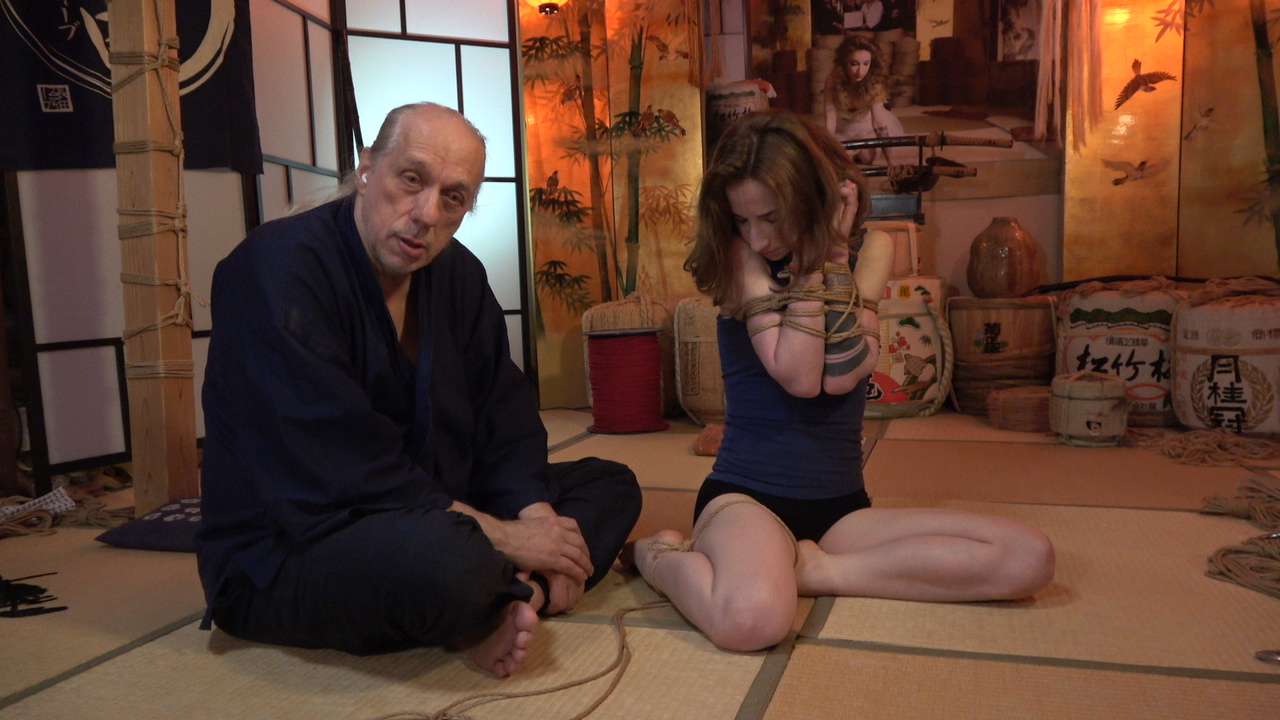
Aisatsu
The iconic aisatsunawa (挨拶縄) techniques involve one "greeting" in the front to gauge the rope partner's sensitivity and willingness to engage in an emotional exchange.
There are three more "greetings" in the back.
The strappado version meant to check the flexibility of the rope parter.
The diamond (hishi, 菱) version meant to improve finger dexterity and acquire muscle memory.
The takatekote (高手小手) version meant to check the rope partner's flexibility.
The Second China Workshop
In this second masterclass of Yukimura-ryu (雪村流) we discover the secrets of aisatsunawa, explore a few strappado themes, and delve into a floor progression that involves the Yukimura-ryu armflute (shakuhachi shibari, 尺八縛り) combined with the iconic Yukimura-ryu legbinder (ashikubi momonawa, 足首腿縄).
All concepts and techniques are expertly translated in Chinese.
At the end of this workshops we are discussing the secrets of ki/chi (気) and the philosophy of Osada-ryu.
The Importance of Nawajiri
It's a free country. And you are free to handle your rope like a noodle.
But if you put your mind to it and imbue your rope with energy and direction your sessions will be much more rewarding. For both you and your ukete (受け手).
Don't get puzzled by the Chinese interpretation in the background.

Aisatsu diamond
.

Leg binder
.

Armflute progression
.
The Curriculum
3 hours
First Section
Available in
days
days
after you enroll
Chef's Recommendations
Check out our various categories: Osada-ryu Courses, Workshop Recordings, and Special Bundles.
